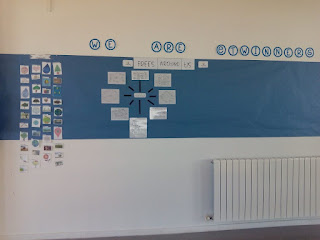Eric Carle's stories in your CLIL Science class
.jpg)
Good day! Today I would like to tell you which are my favourite Eric Carle's stories and that I have used with my students. Children love to be told stories, specially if you create a nice atmosphere and if they can be engaged at the same time they are listening to the stories. I discovered Eric Carle stories loads of years ago, but I still use them with 1st and 2nd graders. I adapt the text for them because English is not their first language. I usually use them at Science lessons to learn about animals and plants, but as you already know there is a lot of vocabulary that we can revise or that they can learn as they are listening to the story. What I like the most about these stories is that there are sentences that are repeated along the story and this makes students participate and learn the structures and the vocabulary. Keep reading and you will find out how I have used these stories in my classes. Here we go! THE VERY HUNGRY CATTERPILLAR " The very hungry catterpilar ...








